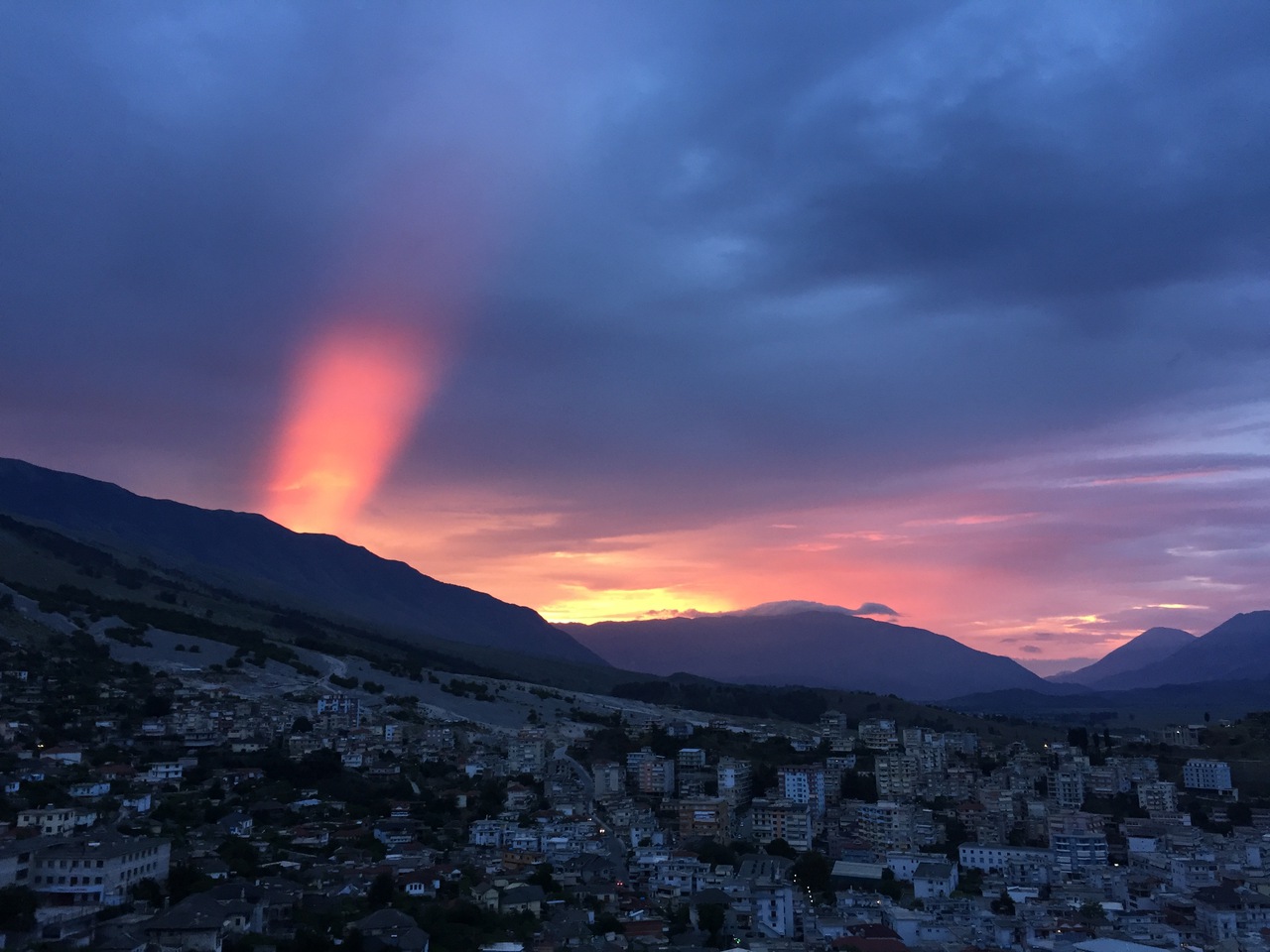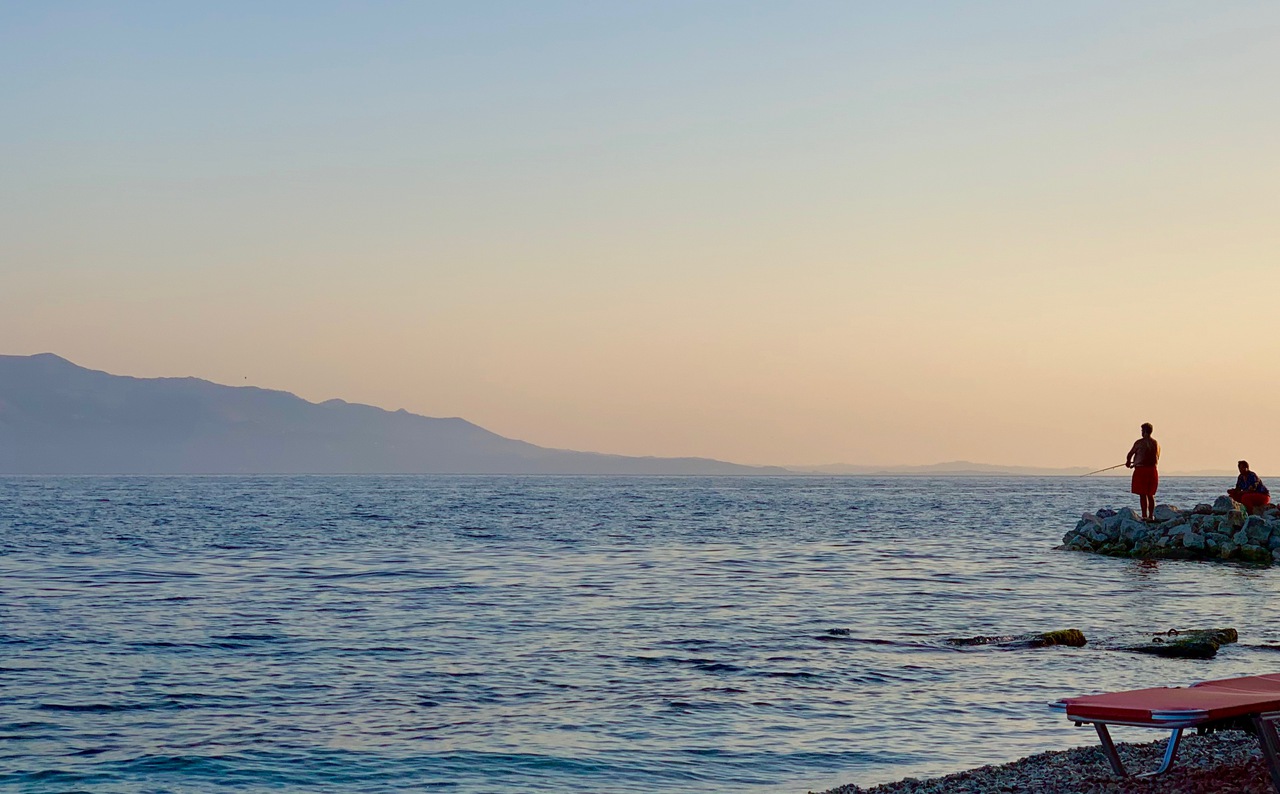It had been a long and jolly beach day in Ksamil. I was in a bus, on my way back to the city of Sarandë. The bus passed a bar that was painted with the colors of a football team. The wall was bright red with the words "Partizani Kampion" in white. It looked curious. Me and my fiancée had plans to go out for drinks later - we'd seen praise for a cocktail bar called Jericho. I suggested that we start the evening by checking out the football bar. It's one block uphill from the Sarandë central square.
The bar was almost empty, like most bars in early June. It was more like a living room, actually. The place was covered in memorabilia of the FK Partizani. There were scarves and shirts hanging on the wall, trophies everywhere. The inside of the bar was also painted with the team's colors. The owner came up to us and told us about his fandom for the team. He asked if we could pose with Partizani scarves for a photo that would be posted to a Facebook page he administers.
He told us to pick our beers from a fridge - there was no tap. While we were enjoying our beers, he brought us snacks from the kitchen. Eventually we were the only customers. We then felt like guests at somebody's home. The owner seemed really happy with us foreigners visiting his bar and the second round of beers was on him. An experience like this is a great example of Albanian hospitality!
As one of our old sayings goes: Our house belongs to God and the Guest! Everywhere you go you will be made feel at home. Every door you knock on, you will be greeted and treated as one of the family.- Smile Albania
I feel that Albanians are humble and really care about making a good impression. It's not granted that all Albanians understand English (Italian or Greek might work better), but it's not a problem. With goodwill, things go smoothly.
There's plenty of reasons to visit Albania. The clear waters of the Ionian Sea and vast mountain ranges are beautiful. The area has been populated for millennia. You'll find ancient ruins and beautiful churches. Traditional Albanian dishes and dishes from Greece, Italy and others provide delicious variety. Living and accommodation costs are relatively low. Most importantly I have felt extremely welcome there. For a Finn such as I, Albania is relatively close - 3.5 hours by plane. The weather is distinctly warmer than in Northern Europe.
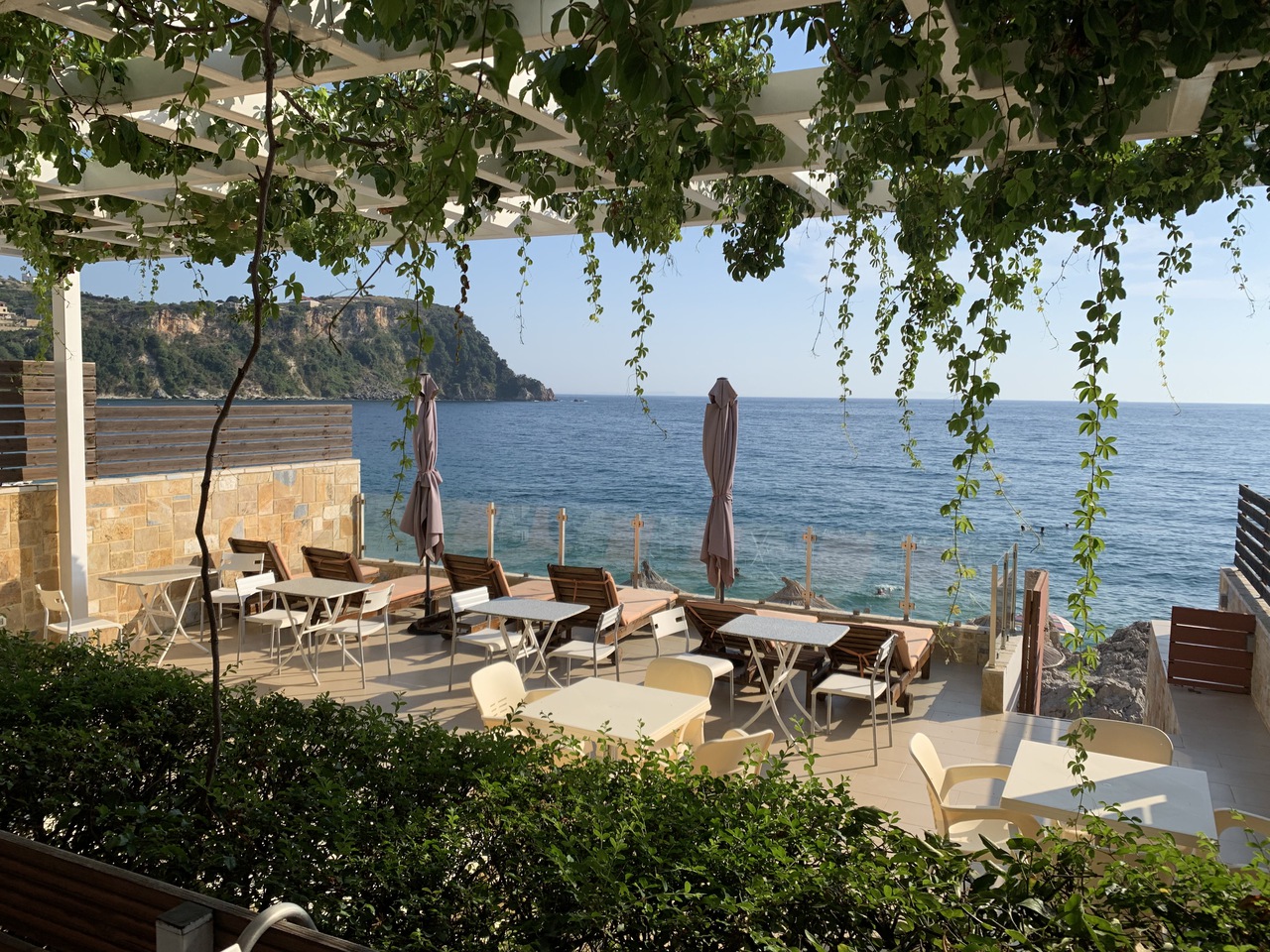
Albania is an European country of a little less than three million people. Albania has its own currency lek (plural: lekë), and its own language (Albanian). Albania was a communist republic since World War II until the early nineties. Becoming the world's first atheist state, religion was banned and hundreds of places of worship were destroyed. These days Albania doesn't have an official religion. Islam is the biggest religion in Albania, followed by Christianity. Religion is not apparent in the daily life from a tourist's perspective. We've been to beautiful old churches. You'll hear a prayer call every now and then.
Economy of Albania has been growing for a long time. Rapid growth took place in the later half of the 20th century. Even the the global financial crisis of 2007-2008 didn't stop the growth. Albania is an official candidate for membership in the European Union. Albania has become more connected to the world after the government allowed citizens to travel abroad in 1990 and improved ties with foreign states. There's no doubt tourism will boost up the economic growth.

When to travel (pick your season)
There are three distinct seasons for tourism in Albania. The "middle season" is from mid-June to mid-July, and the "high season" lasts from mid-July through August, and the "low season" is all other parts of the year. The seasons affects the prices and availability of both accommodation and services. Some hotels, restaurants and stores might be closed during the low season. The middle season is a bit busier, and when most Europeans have their holidays, the high season brings a lot of traffic to Albania. I've been in Albania during low and mid seasons, and could spot the difference. I paid roughly 50% more for accommodation and could see a difference in the crowds during the mid season. You should consider the weather and transportation when choosing the time of travel. Late spring and early summer might be more tolerable if you don't like 30°C+ temperatures and crowds.
Not that (Southern) Albania's a full on tourist destination. I've heard that it's similar to how Croatia was some 10 years ago. Right now it's still quite rare for an European to travel to Albania unless they are from neighboring countries like Italy and Greece. I found Albania to be far less superficial than touristy areas in Portugal, Spain, Southern France and the like. Judging from what I heard from locals and travelers, things are picking up every year. I think that it's possible for Albania to reach similar level of tourism as more popular Mediterranean destinations eventually.
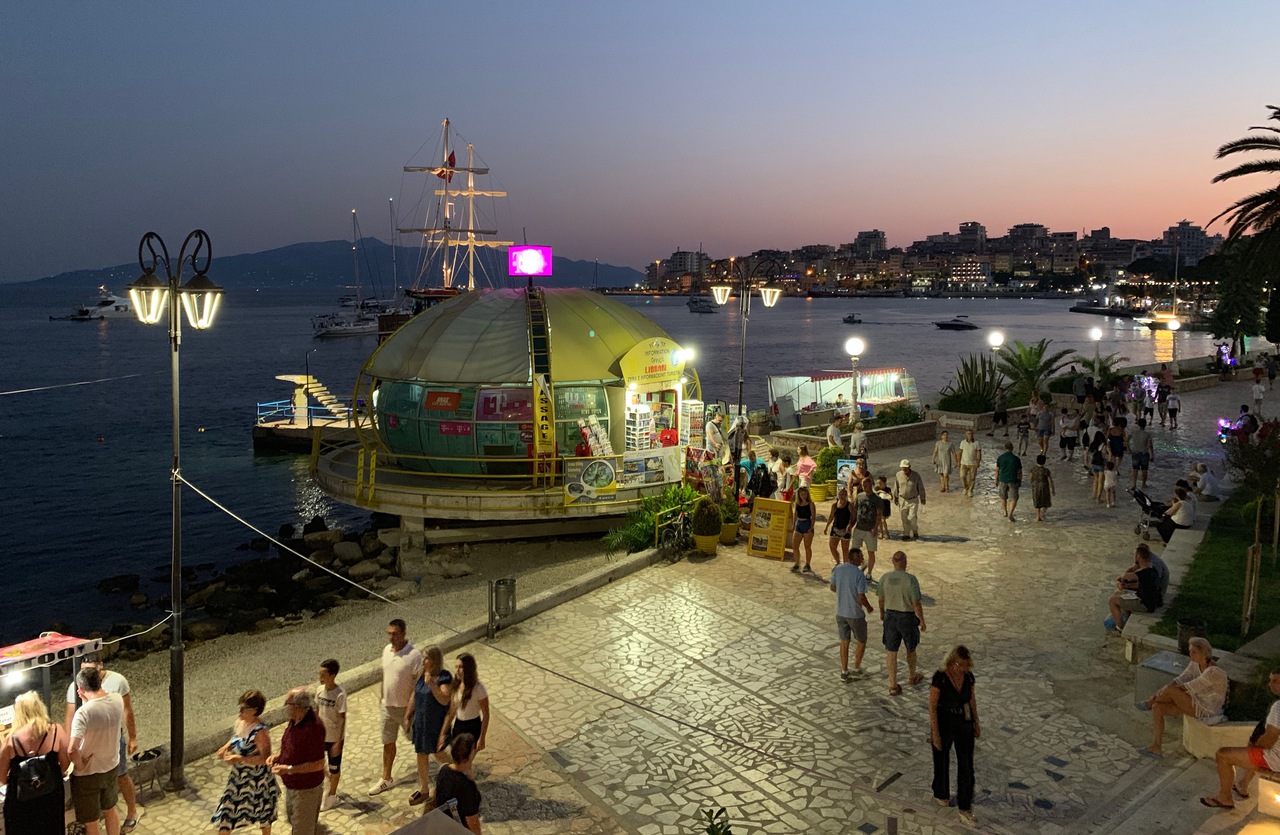
Sarandë and other popular vacation destinations take tourists into account. You'll find the usual souvenir and beach equipment stands in the beach promenades, bunch of bus tours to attractions and eager taxi drivers waiting for passengers. Best beaches are often private and sun chairs will cost a humble amount of lekë.
Getting there and getting around
Southern coastal Albania, or Albanian Riviera, is easily accessible by flying to Corfu. Corfu is a Greek island just miles from the coast of Albania. From what I've seen, at least Finnish, English and German airlines fly to Corfu. You can take a ferry from the port of Corfu (only 10 minutes from the airport by bus) to the coastal Albanian cities such as Sarandë and Himarë. There are several ferry connections per day, especially in the afternoon. The ferry costs about 25 euros per trip. We bought our tickets from Ionian Seaways. You can buy the ticket and print it. Otherwise you have to visit their ticket office by the Corfu/Sarandë port. The capital of Albania, Tirana, has an airport of its own. Tirana is to the north and inland. There are bus connections from Tirana to Southern Albania on two different routes, coast route through Vlorë, and other passing through Gjirokastër.
Some people travel all the way from Croatia to Albania following the coastal routes. I've heard that it is a beautiful experience and easily done with a rental car.
I've always travelled straight to Sarandë after landing in Corfu. Sarandë is a travel hub of sorts. You can either enjoy your time there, or continue to major cities such as Vlorë and Gjirokastër by bus. Sarandë is also close to major attractions such as the ancient city of Butrint. Sarandë has nice, yet pebbly beaches. Sandy beaches of Ksamil are 20 minutes away to the south.
Much of Albania is covered by mountains. In order to travel between coastal cities and from coast to inner Albania, you'll have to ride alongside or cross the mountains. This might be why Albanian railroad network was never extended to the Southern parts. Traveling from Sarandë to locations mentioned above can be intense, at least if you're from a flat area such as Southern Finland.
I've had sweaty palms when on top of a 1.5km tall mountain on a bus filled to the brim, in the rain. There are several memorial sites for people who have driven off the road and plunged into a quick and sure death. Don't be alarmed, though. The roads are in great condition and the bus drivers know what they're doing. I was in awe when a bus driver was smoking a cigarette, driving with just one hand, and administering break while driving down a mountain. There have been no close calls on my many bus rides. Locals are totally used to this.

Bus fares between cities are only a few euros. If you're adventurous, you can also pay for a private-ish ride by a small bus or a taxi service. Some (possibly unofficial) drivers only charge less than ten euros for such a ride.
Pay attention to how bus schedules are defined, and try to be flexible. It's not uncommon for some bus rides to be a no-show if there are too few passengers. For instance, I went to Butrint with my fiancée in the low season with a bus. We were going to take the last bus back to Sarandë, but it didn't show up. We didn't see any taxis nearby, so we went to ask the national park guard about what to do. He then went to discuss the situation with the Butrint ticket salesperson, who said that his shift had just ended and that he can drive us "home" in his personal car. So he did. This year we were in Butrint again, and got a ride back to Ksamil from a young couple. Albanians truly are kind!
Accommodation
Staying at a hotel in Albania has been consistently wonderful. Many of the hotels are quite new and well-equipped. You'll find Wi-Fi, air conditioning, very comfortable double beds, fridges and other modern comforts. I mentioned before that Albanians are known for their hospitality. It extends to room service and cleaning. Our hotel rooms have always been tip-top and our linens and towels fresh. We've had our laundry done for free.
The hotels are often quite small, having only some six to a dozen rooms. I find it very comfortable. During the low season I've felt that me and my fiancée have sometimes been the only people staying in a hotel at the time. Peacefulness abound.
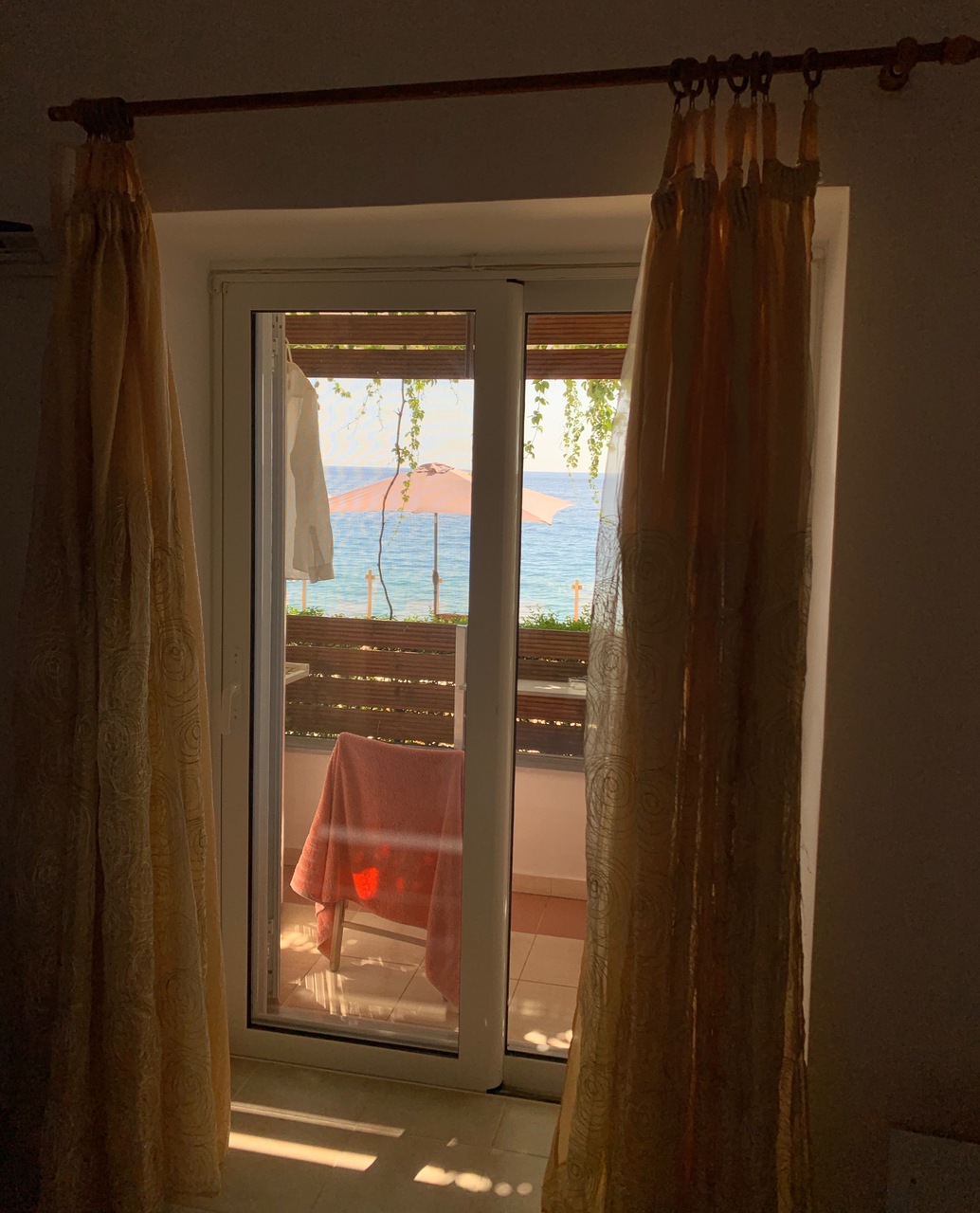
You'll quickly notice that the infrastructure of the mountainous area means that one cannot dispose of toilet paper and other items into the toilet. This might be different from what you're used to. Some restaurants might feature a "hole in a floor" type of toilet. I am also not sure if most people can safely drink the tap-water - we bought bottled mineral water (sometimes hotels even had some in the fridge for free).
Accommodation is very affordable compared to most European countries. A night in Hotel Kodra in Gjirokastër was 40 euros during the low season. The price included a breakfast for two. I was expecting a standard breakfast buffet of bread, bacon, cereal, juice and coffee, but what we received was far better. We were instructed to choose a table, and then we were personally served a hour-long feast of some ten different shared plates of doughnuts, cheeses, fruits and other delicious bites. Coffee was made to order (e.g. cappuccino). Incredible.
I recommend Titania hotel for people staying in Sarandë. Titania is fresh, modern and is in a great location just next to Sarandë port and beach promenade. For Himarë I recommend Mare Bread and Breakfast. Mare has a very friendly staff and is great for families. It has a private beach, which is easily accessed from the terrace. Many rooms have a beautiful view of the sea. We stayed in a cozy room on ground level. Potami Beach (the general area of where Mare is located) is full of restaurants and quite close to the Himarë city. A night in both Titania and Mare costs around 70 euros in mid season.
Food and drink
Most of the restaurants in Southern Albania seem to be privately owned. I didn't see any proper chain restaurants, and western franchises like McDonalds are nowhere to be found.
We've had a lovely time in Taverna RRapo in Sarandë, which is run by a family. Lack of hired waiters makes the service feel more intimate. We had delicious stuffed peppers on our first visit. We ordered them again on our second visit, and the response was "mom's not here, no stuffed peppers". At that time they fired up the grill just for us. I ordered grilled chicken for about 700 lek (~6 euros), thinking that I'll get chicken fillets. I was served a whole chicken instead!
Main courses are often grilled. It's typical to match grilled meat (chicken, lamb) with tzatziki or other yoghurt based dip. Albanian kitchen favors oven cooked dishes such as moussaka, pastichio and lasagne - many dishes are based on Italian and Greek cuisine. Stuffed peppers and tomatoes are also common. Many restaurants serve pizza that is prepared in a stone oven. It's rare to see a specifically vegetarian section in a menu. The menus always had many vegetarian options, though. Some restaurants prepare vegetarian alternatives of e.g. moussakas. Common starters include white cheese (prepared in various ways), olives and grilled vegetables.
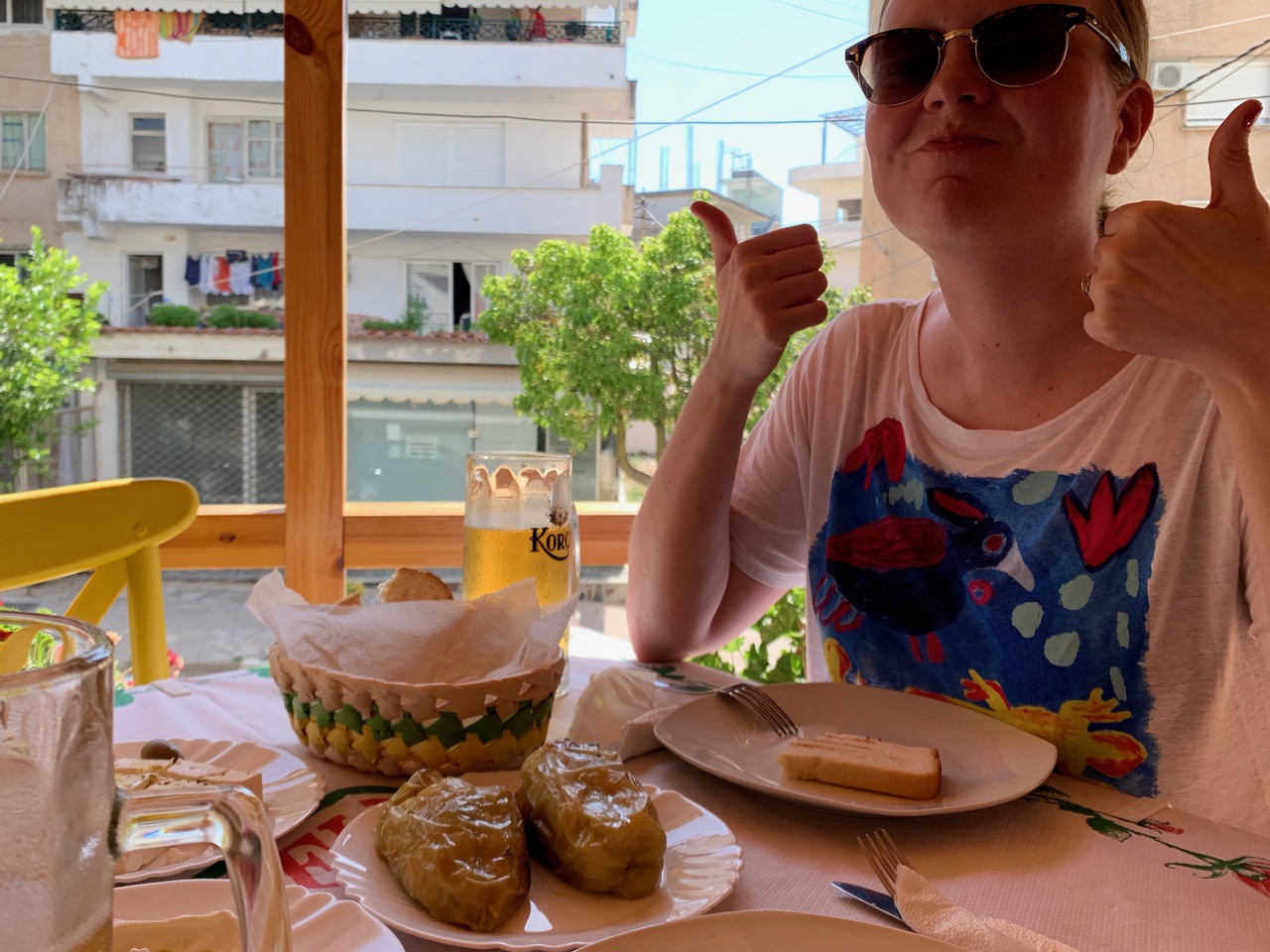
Most restaurants have a nice selection of fresh seafood. Seafood prices vary a lot. Rarest catches can be relatively expensive, up to 4000 lek. Being allergic to seafood, I can't say much of the taste. If you want to enjoy seafood, try Taverna Lefteri. It's the oldest restaurant in Himarë, and has the best reviews.
Himarë has a great selection of restaurants overall. We dined almost daily at Taverna Stoli. Stoli has a great selection of dishes. It's by the beach with a nice view and has very gentle staff. Tramonto Ristorante has a breathtaking view of Himarë. It's on top of a steep cliff at the edge of Himarë city limits. It's feasible to walk there, though keep in mind that getting back by foot in the dark can be tricky - the path there has an unlit section. Cibo offers fresh homemade pasta.
Our favorite restaurant in Gjirokastër was the one associated with Hotel Kodra. I recommend the traditional dishes they offer.
You can match your dishes with cheap drinks. A large (bottle of) beer costs around 2 euros, or 200-300 lekes. The beer selection is usually limited just to lagers and pilsners. Some bars have Belgian and German beers. Of the common (Albanian) beer brands, I prefer Korça. A half liter wine jug will lighten your wallet by around 400 lekes (a bit more than 3 euros). It's difficult to find sparkling wine and champagne, since restaurants mostly serve wines from nearby. Drinks such as gin and tonic and mojito tend to cost around 500-600 lekes. Soft drinks and various kinds of juices cost as much as a small beer.
A dinner for two with starters, main course and drinks costs somewhere between 15 euros and 40 euros.
Places of interest
Sarandë area
City of Sarandë has two major attractions; the Lekuresi Castle and the Monastery of 40 Saints. They are both situated high atop the city. Somehow I never found the time to climb up to them, but I've heard that the castle provides a great view into the city.
One of the major attractions outside Sarandë city limits is the Blue Eye. It's said to be a "beautiful oasis with deep blue water". It's quite close to Sarandë, on the route to Gjirokastër.
The beaches of Sarandë and Himarë have a pebbly floor. It's comfortable enough for me, but if you're looking for sandy beaches, look no further than Ksamil. Town of Ksamil is a 20 minute bus ride away from Sarandë. You can board a municipal bus that is very affordable, or take a private ride. Ksamil has plenty of private beaches. Renting a sun chair for the day costs about 4-5 euros. I've had a really nice beach day at Guvat. The restaurant servers drinks directly to sun chairs. You can take a break from swimming and sunbathing, and enjoy e.g. a pasta in the restaurant. The beach is small enough to feel cozy. Ksamil itself has plenty of hotels and restaurants.
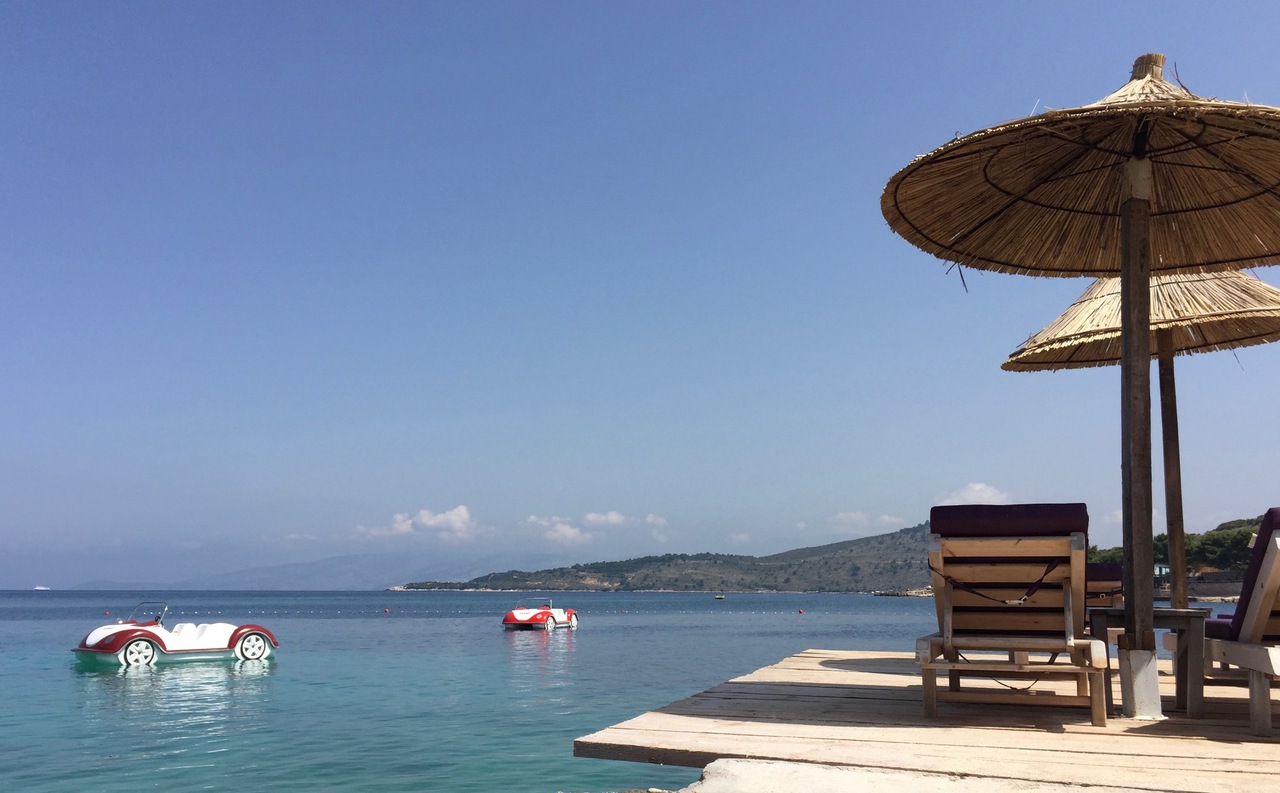
Butrint
The greatest attraction of the Sarandë area is the archaeological national park of Butrint. Butrint is a few kilometers south of Ksamil. The Sarandë-Ksamil bus line takes you there. Quote triphistoric.com:
Originally part of an area called Epirus, Butrint has been occupied by the Greeks, the Romans, the Byzantines and the Venetians. As a result, Butrint offers a wealth of incredible archaeological structures, including a well preserved Greek theatre, fortifications which have been changed by each civilisation which occupied it, Roman public baths inside which lies a paleo-Christian baptistery and a 9th century basilica.
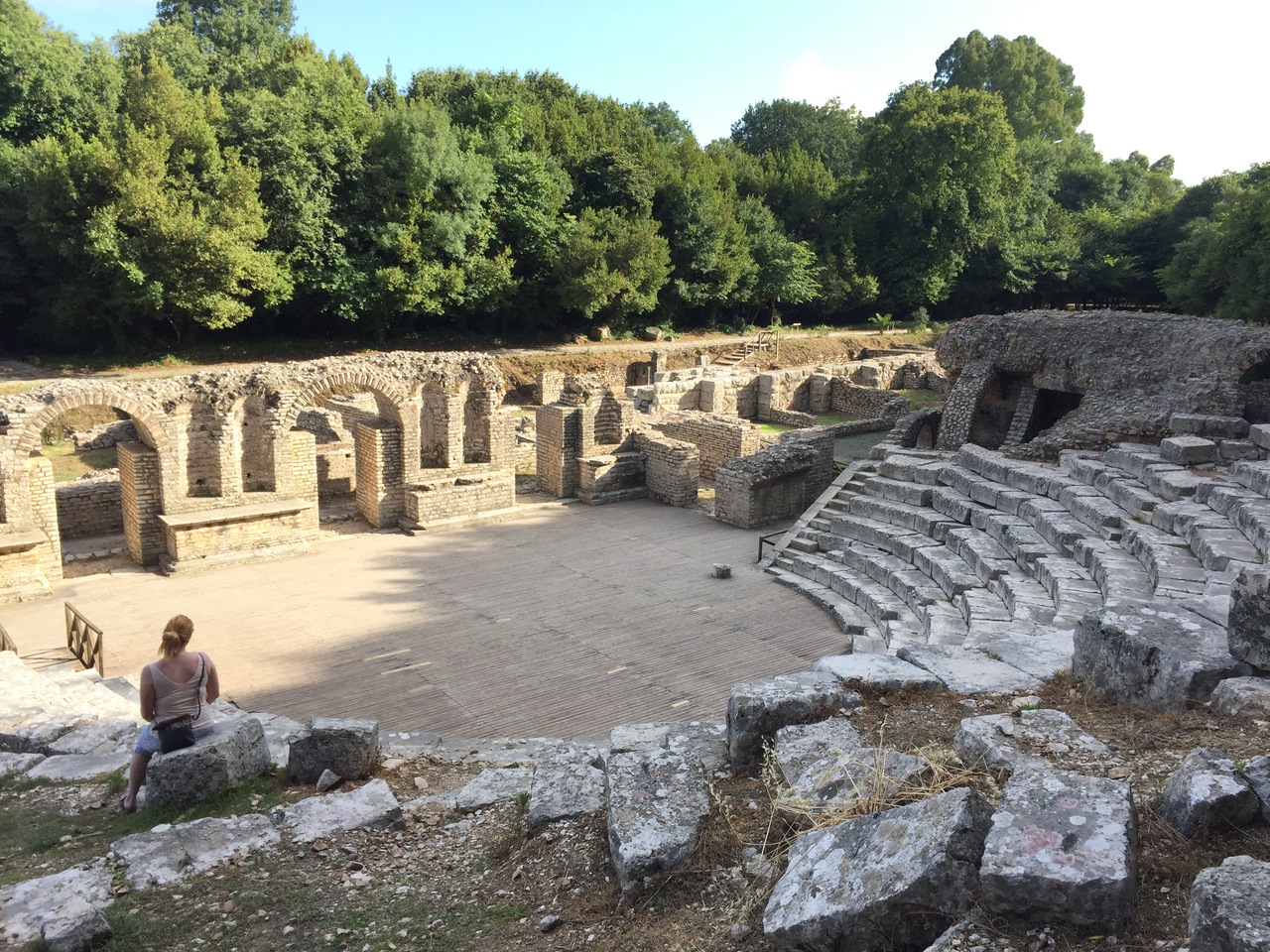
The structures are indeed well preserved. You can walk around the ruins on the ground and on wooden pathways. The Greek amphitheater is in such good condition that during the Butrint Summer Festival (mid July) you can go and see a play on it! We saw Othello played by the Bulgarian Army Theatre. There's a path that circles the area from the city ruins to a fortified castle-like structure at the top. From there you can see the nearby village, and Corfu on the horizon.
The atmosphere is just magical. We had the chance to wander around in peace during the early evening. I felt connected to ancient ways of life. The structures have retained their basic shape and many details, so with a little imagination you can see people living there.
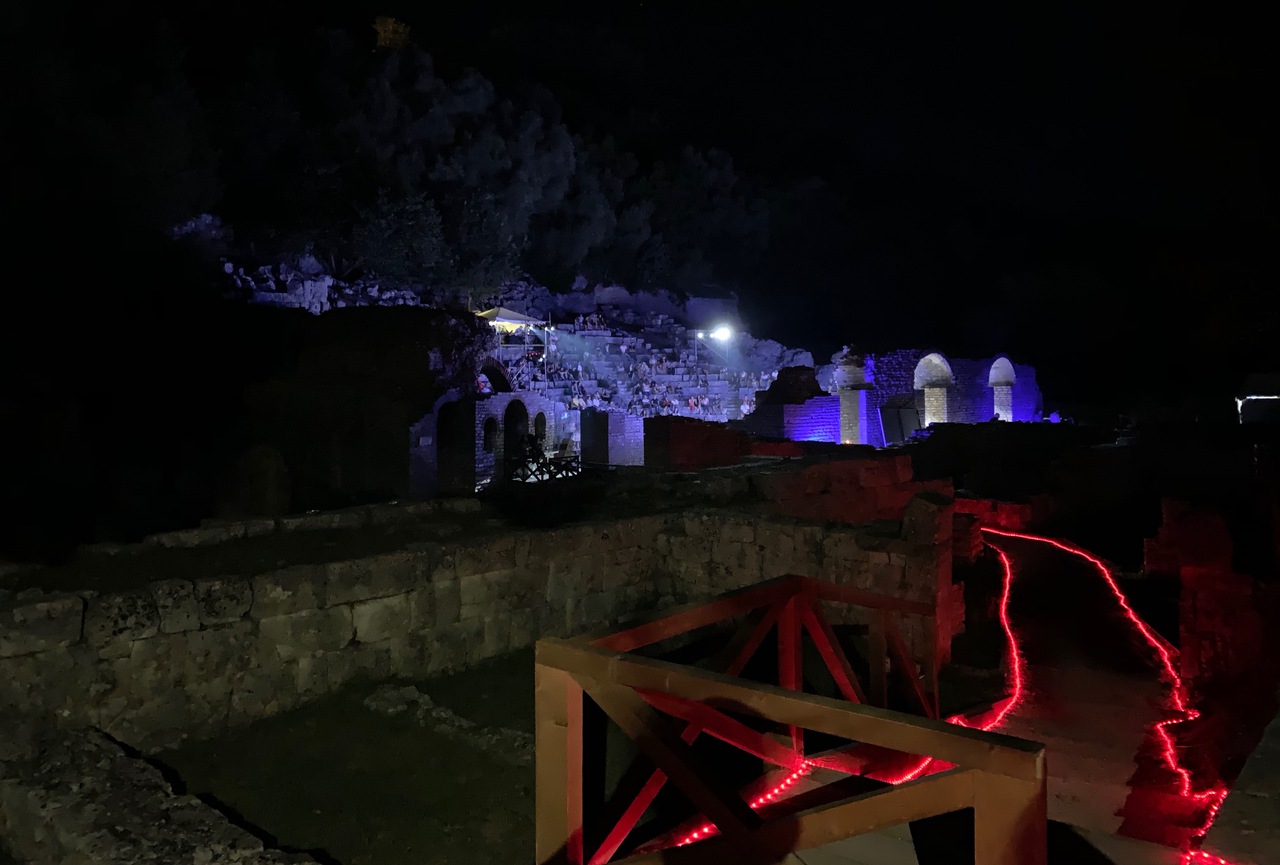
Himarë
The Castle of Himarë, or the old town, is well worth a visit. It's several kilometers uphill from Himarë city center. We could wander the narrow streets of the old town without seeing many other visitors. There is a small café near the top with glorious views of the bay(s). At the top of the old town you'll find an old church with beautiful paintings and an eerie feel. The lack of staff (guards, guides etc.) will let you immerse into the centuries that have passed while the old town has been defended from invaders and has stayed intact.
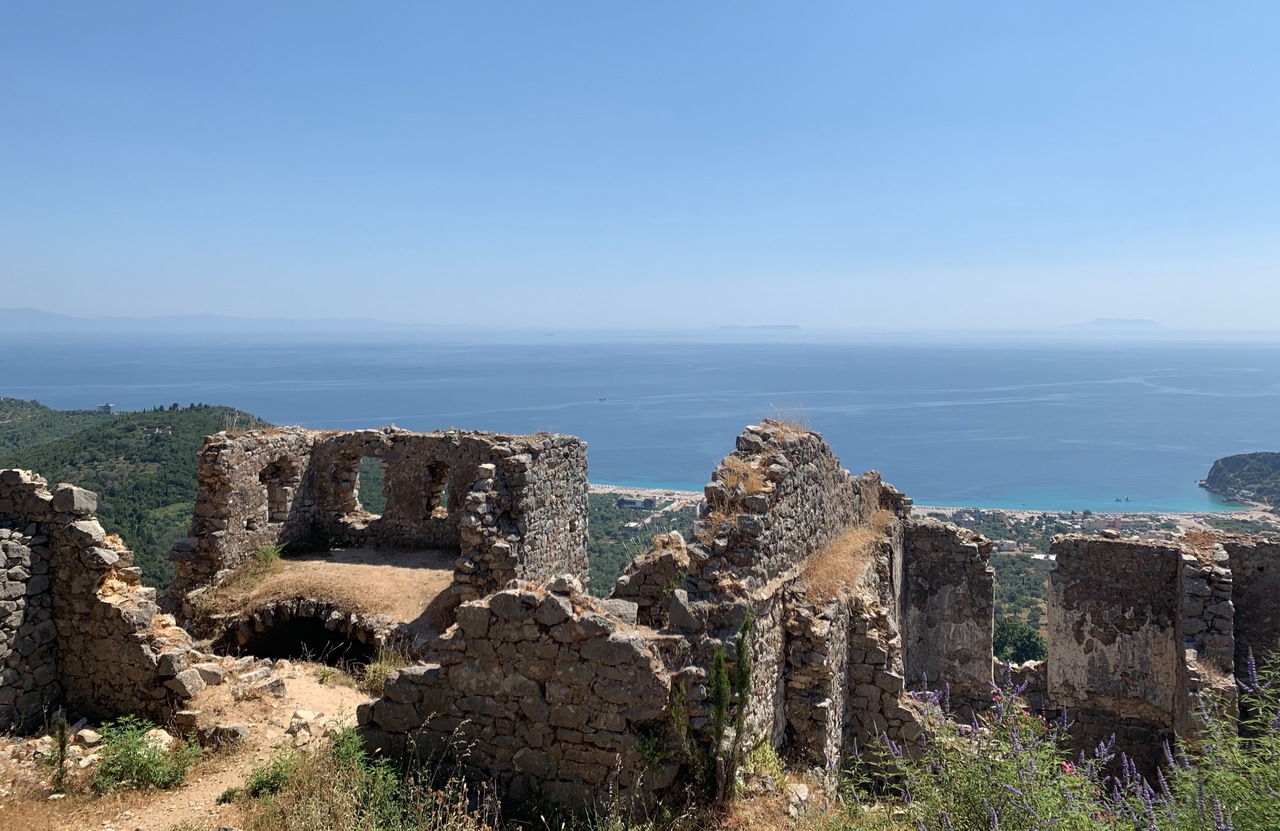
Gjirokastër
Of the cities' castles, Gjirokastër's castle is the most impressive. The castle overlooks the city and it's old town, which is a UNESCO World Heritage Site. Inside you'll find the National Museum of Armaments, a tomb and an open area on the ramparts. The ramparts contain an American airplane(!) and a festival stage. The castle was mostly empty when we visited it. It's kept in good condition and has plenty of interesting hallways and cellars that you can explore.
Gjirokastër's old town contains old houses of powerful families, open for visitors. Skenduli House and Zekate House provide an interesting look into life of Albanians in the past. There's a distinct eastern influence and plenty of beautiful ornaments. You can wander freely (for a fee), or take a guided tour. We visited the Zekate House specifically and found it impressive. The old town also contains a bazaar full of handcrafted items such as jewelry, instruments and souvenirs for sale.
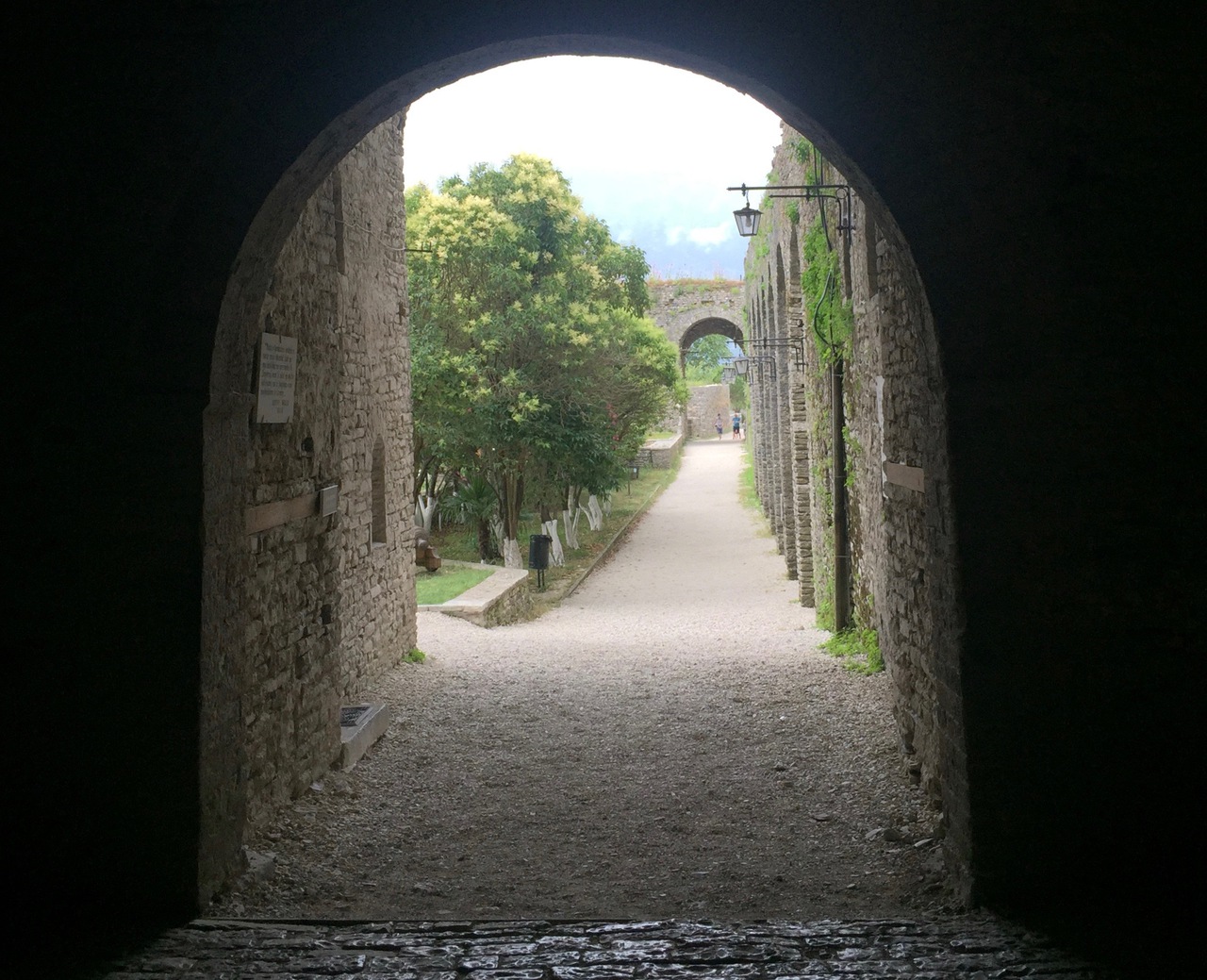
Find your way
There are a number of ways to structure your visit to Albania. You can visit several cities and attractions, bringing more unique experiences to your reach. If you want to have more of a relaxed and easy vacation, you can just stay in Sarandë or Himarë for the duration of your trip. The latter option is recommended to families with small children. You can choose a small and cozy hotel or apartment, or pick one of the few resorts.
In any case, you won't be disappointed. I certainly have enjoyed both of my trips and have missed Albania as soon as the ferry left the port of Sarandë.
All photos in the article were shot by me. If you want to use them in another context, please credit me (or link them to this article).
If you have any questions, feel free to contact me at hello@matiasklemola.com or on Mastodon!
